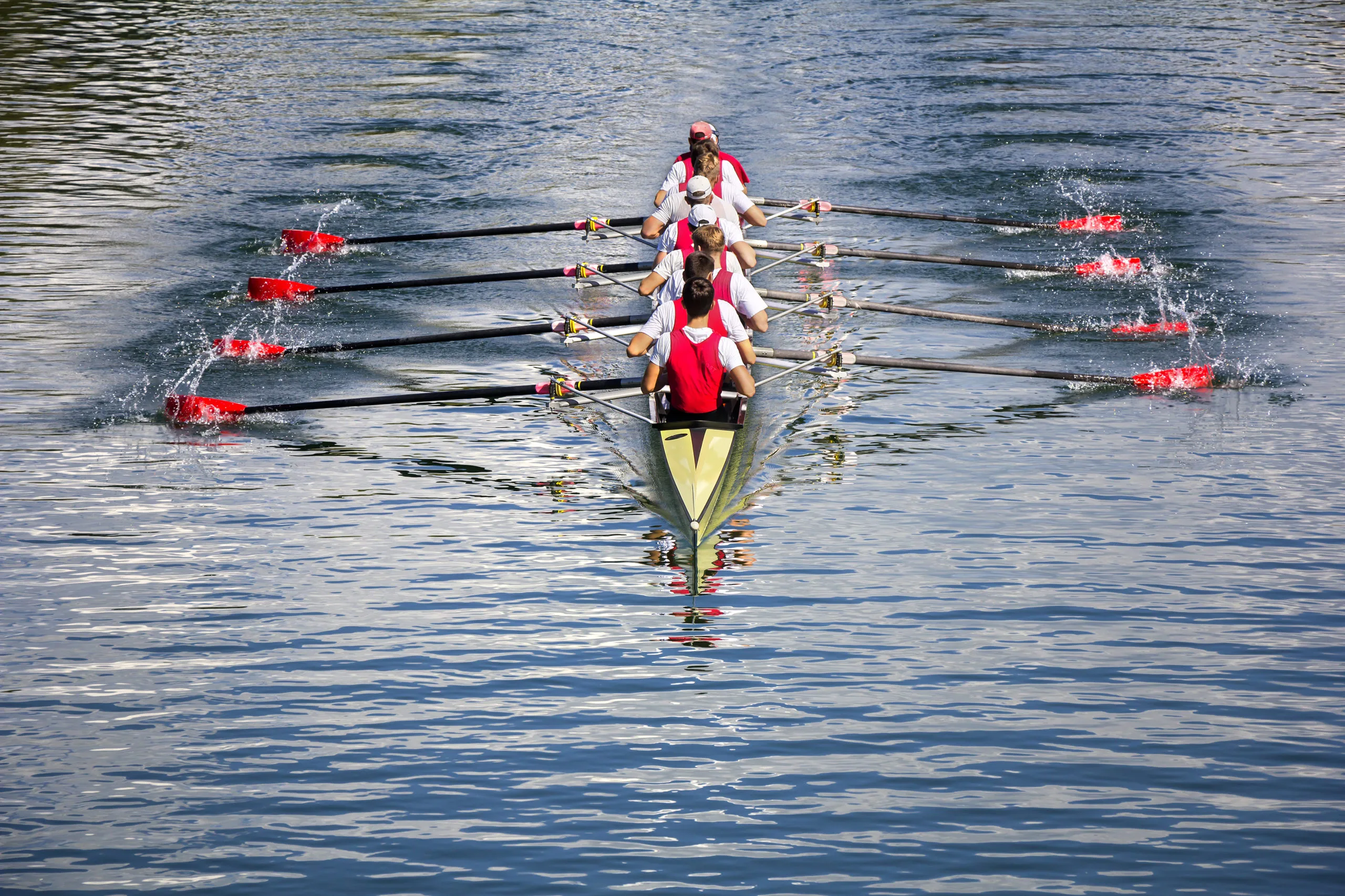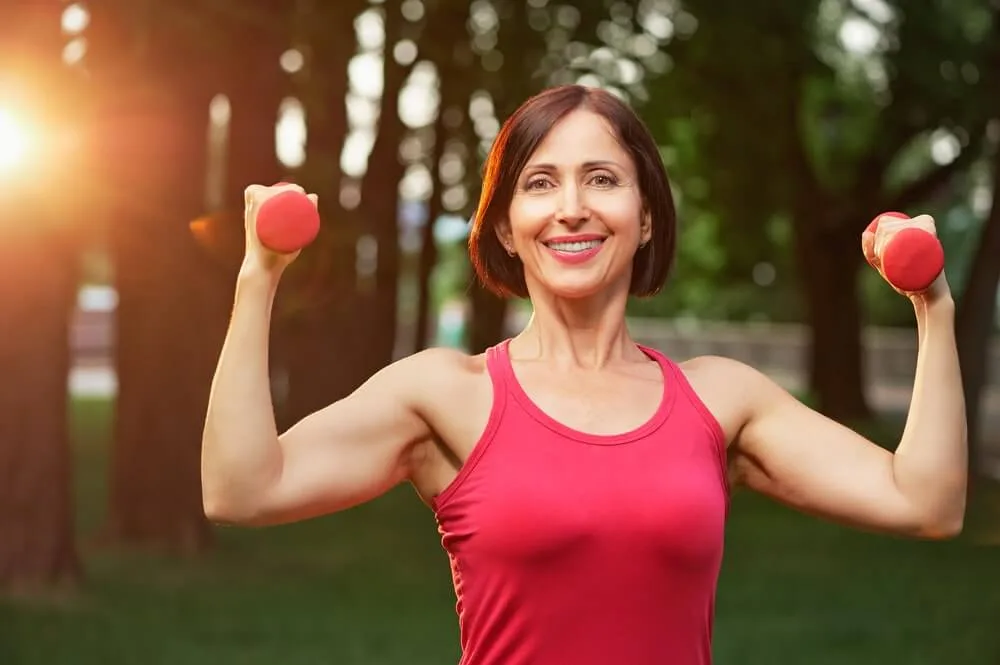Key Contributor: Begum Komurcuoglu, Chartered Physiotherapist
Rowing is a great form of exercise and is highly popular, whether it is recreational, club level or international. However, due to the cyclic and repetitive nature of the sport, most rowers you speak to will also have had some lower back pain at some point or another!
Research in rowing agrees with this and notes a large number of overuse injuries. Lumbar spine (lower back) injuries account for 31.8% of the injuries that are reported, followed by injuries to the knee (15.9%) and injuries to cervical spine (neck) (11.4%) (Finlay et al., 2020).
Quick Summary
- Lower back pain is common among rowers due to the repetitive nature of the sport, with 31.8% of rowing injuries affecting the lumbar spine. Key contributing factors include high forces on the lumbar spine during the stroke cycle, early morning training, repetitive loading, reduction in reflex activation of muscles, muscle fatigue, and tight hamstrings.
- Core strength is vital for rowers to effectively generate, transfer, and control force and motion throughout the body. The trunk and legs are primary power sources during the stroke, and efficient use of the trunk can significantly increase rowing power. Core training should focus on stabilising the lower back, pelvis hip joints and mimicking rowing-specific activation patterns.
- Pilates exercises that enhance core stability and mimic rowing movements include femur arcs, knee hovers, marching bridges, quadrupeds, Nordic curls, thigh stretches, side planks with hip abduction, seated rock backs, single-leg Romanian deadlifts, and Bulgarian squats. Pilates is recommended to help rowers learn to stabilise and effectively use their core, preventing lower back injuries and improving performance.
Is rowing bad or good for your lower back?
Rowing can be both good and bad for your back depending on how you look at it! Rowing is a great form of cardiovascular exercise and builds upper body and back strength, both of which are protective factors for general back pain.
However, all sports carry a risk of injuries due to their repetitive nature and rowing is no different, with the lower back being the most common area of injury for this sport.
Why rowers get lower back pain?
The magnitude of the forces acting on the lumbar spine during a stroke cycle is very high as you are in a flexed posture for 70% of the cycle. The combination of flexion with compressive loading has been identified as a mechanism for lower back injury
Reid & McNair (2000) have also identified the following as contributing factors as well:
- Time of the day for training: Most of us as rowers like to train early in the morning to have calm water and to fit in with other commitments (work, school, etc.). However, flexion stresses can be three times greater than normal in the lumbar spine in the mornings compared to later in the day. This makes the lumbar region more vulnerable to injury in the mornings.
- Repetitive loading: A normal training session of 60-90 minutes may amount to about 1800 cycles of flexion per training session!
- Reduction of reflex activation of muscle: The repetitive motion desensitises the mechanoreceptors in the spinal ligaments resulting in instability in the lumbar segments, therefore for several hours after the activity, the lumbar spine may be more vulnerable to injuries involving bending.
- Muscle fatigue: As the back extensors fatigue during training session, not only does the amount of lumbar flexion increase, the proprioception in the lumbar muscles is also reduced. This means you may go into a greater flexed posture without being aware of it.
- Tight hamstrings: This may cause an increase in backwards tilt of the pelvis, resulting in increased flexion in the lumbar spine
How do you row effectively to prevent back pain
Having good technique in rowing is key. This means you need to assess your stroke cycle. This cycle can be divided into five phases:
- Catch position: This is the beginning of the stroke. Your legs and back are fully compressed, with arms extended as the oar enters the water. Your shins should be fully vertical.
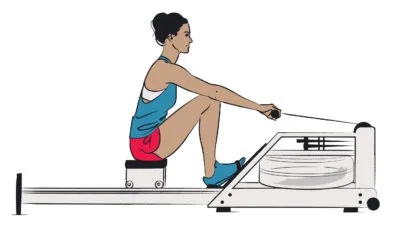
- Early drive phase: Here, your arms will remain straight as the legs engage, still maintaining the flexion in the hips and spine. At this point your legs and trunk extensors are the power source.
- Late drive phase: Your legs will have come into full extension and the hips will start to open as you lean back slightly. Your arms and shoulders will pull back to allow for continued acceleration of the blade through the water.
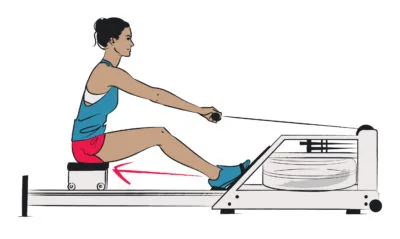
- Finish position: Here the stroke is completed by pulling the handle to the ribs while leaning back slightly. Your shoulders will be slightly behind the hips and your legs will be fully extended. Your hands will tap down to get the blade out of the water before the blade is feathered to allow for a more aerodynamic position as you enter the recovery phase.
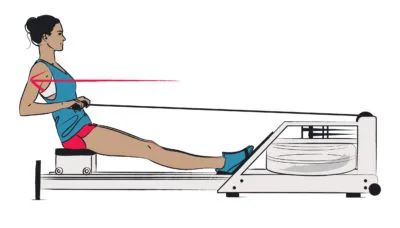
- Recovery: In this part of stroke, the sequence is the reverse of the drive phase. Your arms extend first, followed by the pivot at the hips before controlling the slide as the knees bend back to catch position.

Why do rowers need good core strength?
Monger & Harrison (2016) describe core function as the ability of the core to successfully generate, transfer, and control force and motion in the lumbo-pelvic-hip (LPH) complex and extremities in all planes of motion. This basically means that you can create stiffness around your trunk whilst moving your arms and legs in different directions to generate and transfer force.
Pilates exercises incorporate complex movements that require stabilisation of the LPH complex while performing controlled movements of the extremities. These exercises elicit muscle activity that mimic activation patterns we often see in rowing.
Core training for rowers
On average, during the stroke cycle in rowing, the legs produce nearly half (46.4%) of the total rowing power. The trunk contributes 30.9% and the arms and shoulders produce 22.7% of the power. Therefore, the power of the stroke is actually in the coordination and utilisation of the legs and trunk. However, the largest reserve for increasing power can be found in efficient and effective utilisation of the trunk (Kleshnev, 2020).
The kinematic analysis by Pollock et al (2009) demonstrates high activity of the trunk extensors during the early drive phase. This allows rowers to maintain relatively fixed spinal positions and to use the spine as a “rigid lever” when the legs are transferring the forces to the handle of the oar.
What is interesting is that there is actually minimal co-contraction between the trunk extensors and anterior abdominal muscles at any point in the stroke.
The anterior abdominal muscles are most active in the late drive phase, in which their primary function is to act as a “breaking mechanism” to slow the torso swing when coming into the finish position. Therefore, there is a clear differentiation between the activity of the trunk extensors and abdominal muscles.
This finding should have significant implications on your core training as a rower, since exercises like planks will not be very beneficial as they involve very high co-contraction of anterior and posterior muscles.
As mentioned before, fatigue of any of the core musculature can contribute to lower back pain. Therefore, training the core muscles in similar activation patterns will be important to reduce risk of injury, as well as improving performance in the boat.
What are the best core Pilates exercises for rowers
Since the function of the core muscles is to provide a stable torse as force transfers from the foot plate to the handle, it is important to incorporate exercise with movement of the extremities and/or the hip to better mimic the utilisation of the core during the stroke cycle.
Although static abdominal exercises are not functional for rowing, building your core awareness and stability is an important starting point, particularly if you have back pain.
Try the following exercises to start to build core awareness:
- Femur arc: Use the Core filter at the top of the page
- Knee hovers: Use the Core filter at the top of the page
Once you have understood these and can control the LPH, move onto the exercises below. These exercises are designed to challenge the stable torso by including the movement of the extremities and to train the core muscles in a way similar to your rowing stroke.
You can follow the videos for demonstration and read on for a detailed explanation on why each exercise is important for the stroke.
- Marching bridges: helps you to maintain your pelvic and core stability while the movement comes from the hips. It also builds the strength in your posterior chain, with the feet fixed to improve leg strength during the drive phase. Repeat this 10-12 times.

- Quadruped: this helps to integrate the “rigid torso” whilst you create the movement from the arms and legs. Repeat this for approx. 45 seconds – 1 minute.
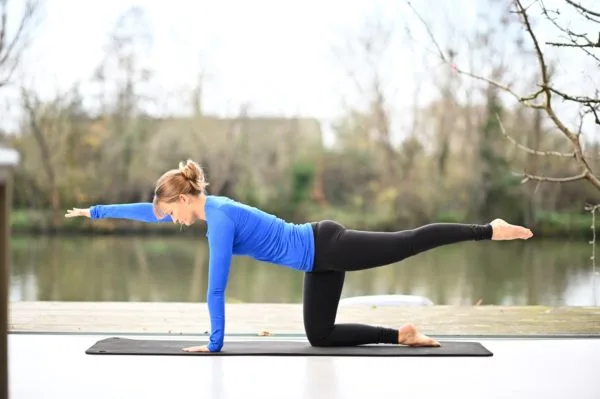
- Nordic curls: this is a great exercise to train the glutes and back muscles for hip stability whilst taking the hamstrings through an eccentric movement. This is important for rowers as you need to have this type of control in the hamstrings during the recovery phase. This helps to control your speed coming up to the catch position.
-
- Anchor the feet under a barbell or have someone holding the feet down, kneeling upright with trunk right over the knees
- Start by hinging forwards at the knees as far as you feel comfortable.
- Try to maintain a ‘neutral spine’ and straight line from your knee to the top of your head.
- Ideally, do not lower all the way to the floor but keep your hands by your chest to catch yourself in case you do.
- Paure at the end of your range before using your hamstrings to raise your body to the starting position.
- Repeat this 6-8 times.
- Thigh stretch: This is another good exercise to train core control and hip stability, but this time focusing on the eccentric control of quadriceps.
-
- Start in high kneeling, making sure your shoulders, hips and knees are in a straight line, with the arms straight out in front of you.
- Keeping the abdominals engaged, hinge the body backwards towards your heels. Try to move from the knee rather than the lower back to ensure you are maintaining a neutral spine.
- Hold for 2 seconds
- Press the feet and shins into the floor to engage glutes and push the hips forward to come back up to starting position.
- Repeat this 6-8 times.
- Side plank with hip abduction: this can be performed on your knees or feet to develop the lateral stability and the deep supporting muscles of the trunk and hips, such as your obliques, gluteus medius, and especially the quadratus lumborum.
-
- Lie on your side with the forearm under your shoulder. This will be supporting your body weight.
- Have the bottom knee bent with the heel in line with hips and top leg straight with the foot resting on the floor.
- Press into your arm and bottom leg to raise the torso and hips up until the body is in a straight line. Ensure that you are pushing yourself away from the floor with your arm, so you are not dropping into your shoulder.
- Holding the hips up, raise the top leg in the air, hold for 2 seconds, then lower it back down.
- Lower the hips back down to the floor to rest.
- Repeat this 5-8 times.
- Seated rock back: here we are working the back end of the stroke cycle with firm heel pressure to minimise contribution from the hip flexors, whilst working on the “breaking mechanism” of the core muscles.
-
- Start seated with your knees bent and feet flat on the floor, arms straight out in front of you.
- Keeping your back flat, lean back hinging from the hips.
- Pause at the bottom of the movement.
- Reach the arms forward and come back in to starting position bringing the body back over the hips.
- Repeat this 10-12 times.
- Single leg Romanian deadlifts: The hip hinge is an essential part of Romanian deadlift, just like it is in rowing during the late drive phase. It is a great exercise to teach you as the rower to apply the force through the leg whilst maintaining a stable core. Performing the exercise single leg instead of double, challenges the deep hip muscles more.
-
- Start by balancing on one leg, with the knee slightly bent.
- Imagine you are tipping your pelvic around your thigh bone and bend forward at the hip whilst extending your free leg behind you.
- Keeping your back neutral, continue to bend at the hip and lower your torso until you’re parallel to the floor.
- Pause in this position.
- Drive through your heel and push your hips forward to stand up to the starting position.
- Repeat this 10-12 times.
- Bulgarian squats: The squat is an amazing exercise at developing leg strength, power and endurance. Increasing leg strength will reduce the effort you need to pull the blade through the water, therefore decreasing the risk of lower back injury. Maintaining good posture and stability in the core when squatting builds the stability you need during the early drive phase.
-
- Stand in front of a low bench or platform with feet hip-width apart. You want to make sure that the legs are not in line to help with balance. It should not feel like you are walking a tightrope!
- Place one foot onto the platform behind you, gently resting the top of the foot on the box and take a big step forwards.
- Engage your core and glutes to lower down to the floor with control.
- Stop when your back knee hovers just off the ground, or when your front thigh is parallel with the ground
- Drive through your front foot and squeeze your glutes as you stand back up.
- Repeat 12-15 times each leg.
Pilates and rowing: Why should Rowers use Pilates?
As we have discussed, rowing is a full-body sport where lower back injuries are incredibly common. Because of this it has been shown that core training should be part of your training and development.
However, when it comes to lower back injury prevention and core training in muscles, it is important to always remember that the main function of the core is to create the “rigid lever” to effectively transfer power from the legs to the blade.
It is important for you as a rower, not to get stuck with doing traditional core exercises like planks and crunches, but to remember to incorporate movement of the extremities instead and use your power-producing muscles.
Pilates exercises are a great way for you to learn not only how to stabilise your hips, pelvis and lower back, but to move and use your core to generate and transmit force through effective biomechanical positions. This in turn will prevent lower back injury when in the boat.
If you are a rower, currently have back pain or have had back pain in the past and want to discuss your technique and what may work well for you in more detail, simply get in touch with our physio led pilates team and request a free phone call.
Frequently Asked Questions
Why does my lower back hurt after rowing?
- If your lower back hurts after rowing – you are not alone! Low back injury is the most common type of injury for rowers. Due to the repetitive nature and large forces needed during rowing, the lower back is often the area that can take the strain. There are several factors that can contribute to rowing related injuries, some of which are related to the nature of the sport such as early morning training and repetitive loading.
- Training errors – such as training once fatigued and individual factors such as tight hamstrings, lack of strength or inefficient movement patterns can also contribute to injuries. If you are suffering from low back pain after rowing – it may be a good idea to work with a health care practitioner specialising in sports injuries in order to identify the factors that are likely to contribute to pain, so that they can recommend an appropriate solution.
Can rowing be good for back pain?
- Rowing could help with your back pain, since it is cardiovascular exercise, which is a protective factor for generalised back pain. It will also help to strengthen your upper body and lower back.
- However, if you are suffering from back pain you should consult with a healthcare professional before starting any new exercise programme to make sure it is suitable for you. This is because the factors contributing to back pain after different for each individual and a thorough assessment and understanding of your problem will ensure that you are choosing the right solution.
Will a rowing machine cause similar pain?
- A rowing machine may cause similar pain to rowing on the water, if the problem is due to poor form or things like lack of flexibility. However, a rowing machine potentially gives you more control over other factors like how long you row for, time of training, or pressure to keep up with others, and therefore may provoke less pain than rowing in a skull.
How often should I do Pilates to improve back pain?
- How often you should do Pilates to improve back pain really depends on your individual circumstances. If you are in considerable pain and having difficulty moving, you should seek the guidance of a healthcare professional. For most people, starting with a little bit of gentle movement and moving several times a day is a good start.
- As you can tolerate more movement then you can progress to do more exercises over a longer period of time. Gentle exercise can be done every day but if you are challenging yourself to fatigue then it is a good idea to include at least two rest days in your exercise schedule.
Visit us at Complete Pilates
You can find us at one of our Pilates studios in London and speak to us about your lower back pain. You can find us at Complete Pilates in Islington or any of our studios (see our Kensington Pilates studio or our Pilates studio in the City of London ) for more information, please get in touch online or contact us on 0203 764 5668.
Education is key:
These blogs are designed to give information to everyone, however, it is important to remember that everyone is different! If you have not seen one of our therapists and have any questions about injuries, what you have read or whether this may be useful to you, please just ask. We are more than happy to help anyone and point you in the right direction. Our biggest belief is that education is key. The more you understand about your injury, illness and movement, the more you are likely to improve.
References
- Finlay, C., Dobbin, N., & Jones, G. (2020). The epidemiology of injuries in adult amateur rowers: A cross-sectional study. Physical therapy in sport, 41, 29-33.
- Kleshnev, V. (2020). Biomechanics of Rowing: A unique insight into the technical and tactical aspects of elite rowing. The Crowood Press.
- Monger, H., & Harrison, B. C. (2016). The acute effect of Pilates exercise on lower extremity maximal strength. International Journal of Exercise Science, 9(3), 4.
- Pollock, C. L., Jenkyn, T. R., Jones, I. C., Ivanova, T. D., & Garland, S. J. (2009). Electromyography and kinematics of the trunk during rowing in elite female rowers. Medicine and science in sports and exercise, 41(3), 628-636.
- Reid, D. A., & McNair, P. J. (2000). Factors contributing to low back pain in rowers. British journal of sports medicine, 34(5), 321-322.
- Soper, C., & Hume, P. A. (2004). Towards an ideal rowing technique for performance. Sports Medicine, 34(12), 825-848.
- Vieira, T. M., Cerone, G. L., Stocchi, C., Lalli, M., Andrews, B., & Gazzoni, M. (2020). Timing and Modulation of Activity in the Lower Limb Muscles During Indoor Rowing: What Are the Key Muscles to Target in FES-Rowing Protocols?. Sensors, 20(6), 1666.
- Wilson, F., Gissane, C., Gormley, J., & Simms, C. (2010). A 12-month prospective cohort study of injury in international rowers. British journal of sports medicine, 44(3), 207-214.


